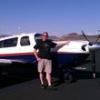New Owner Questions - ROP/LOP & MP/RPM Settings
-
Members Online
- 1980Mooney
- fdc7169
- Marc_B
- KSMooniac
- AndreiC
- Grumpy
- UteM20F
- flyboy0681
- MikeOH
- jrwilson
- phrogpilot73
- RescueMunchkin
- DXB
- Neshi
- NickG
- tankles
- bamace
- exM20K
- tigers2007
- Supereri73
- andrewn
- Bondo
- ohdub
- PMcClure
- Justin Schmidt
- GeeBee
- Mark Staggs
- Joshua Blackh4t
- Andy95W
- toto
- Greg Ellis
- geoffb
- Pinecone
- hammdo
- BlueDun
- Gilt
- Adam_StPete
- LooneyMooney
- hubcap
- KASE
- Vance Harral
- midlifeflyer


Recommended Posts
Join the conversation
You can post now and register later. If you have an account, sign in now to post with your account.